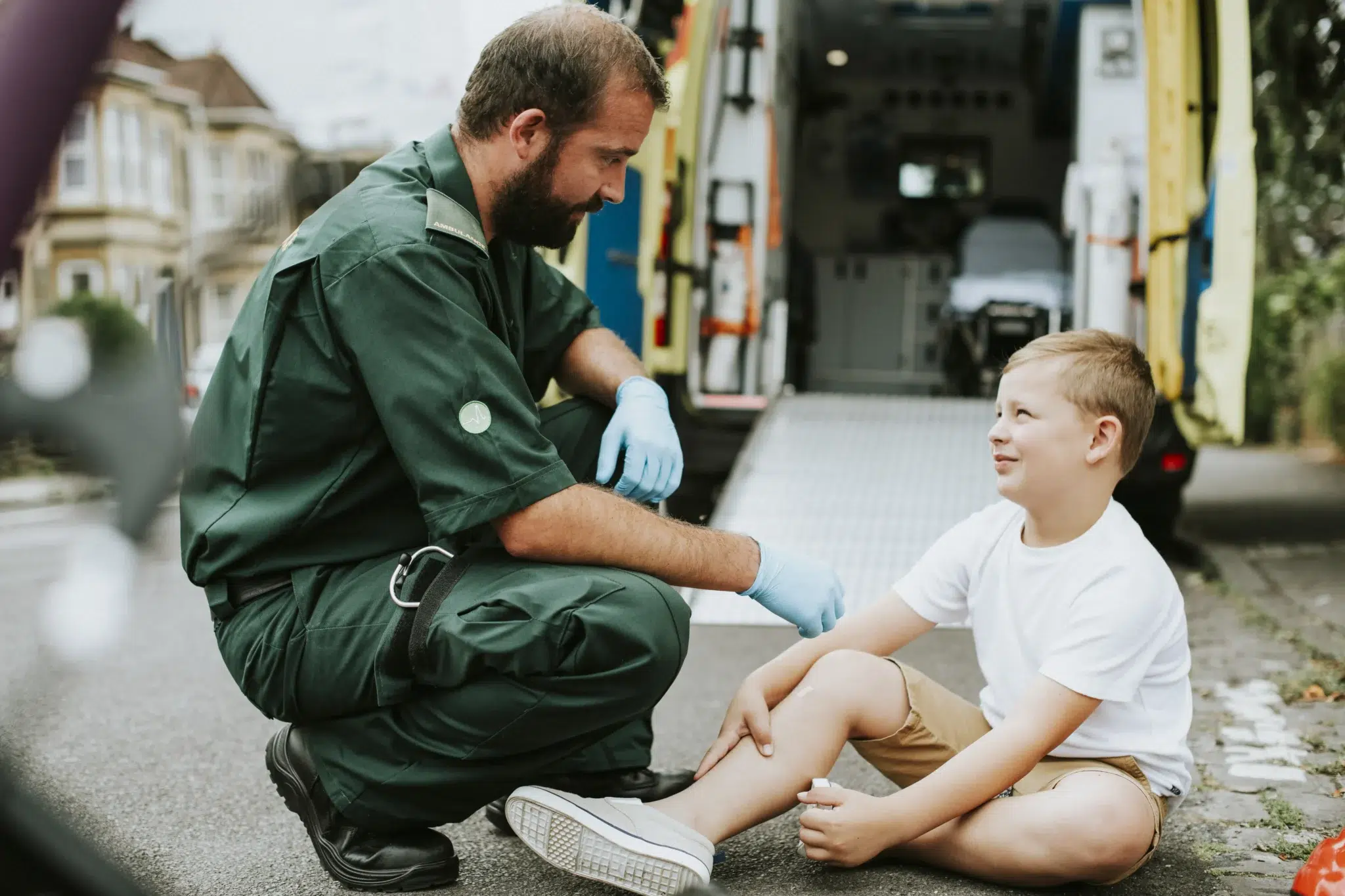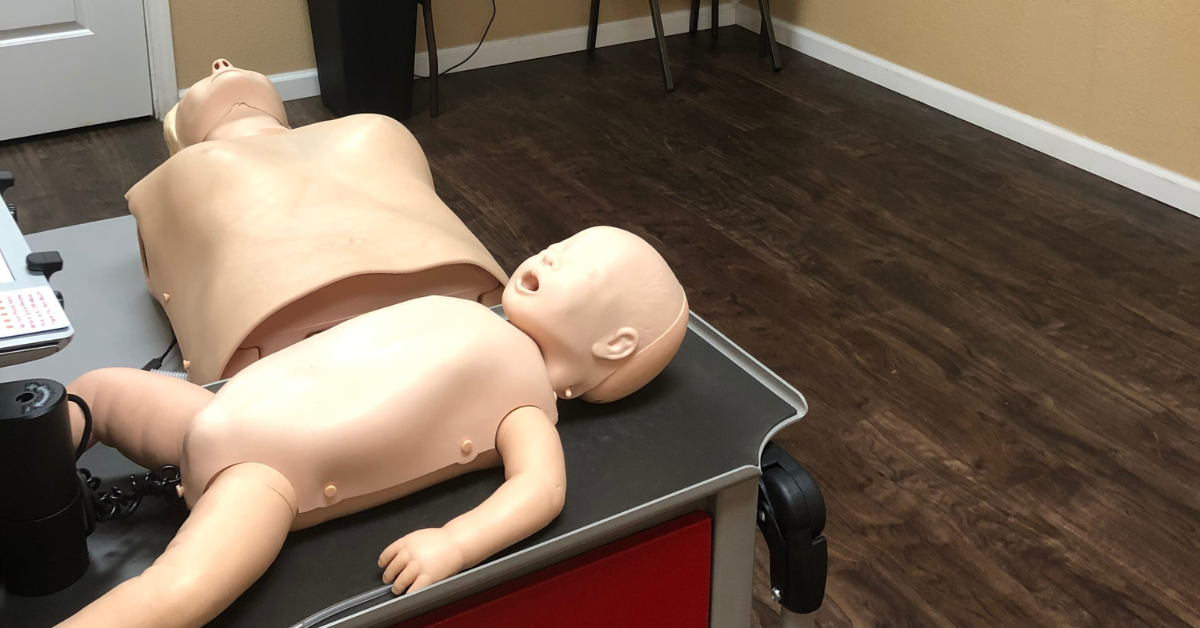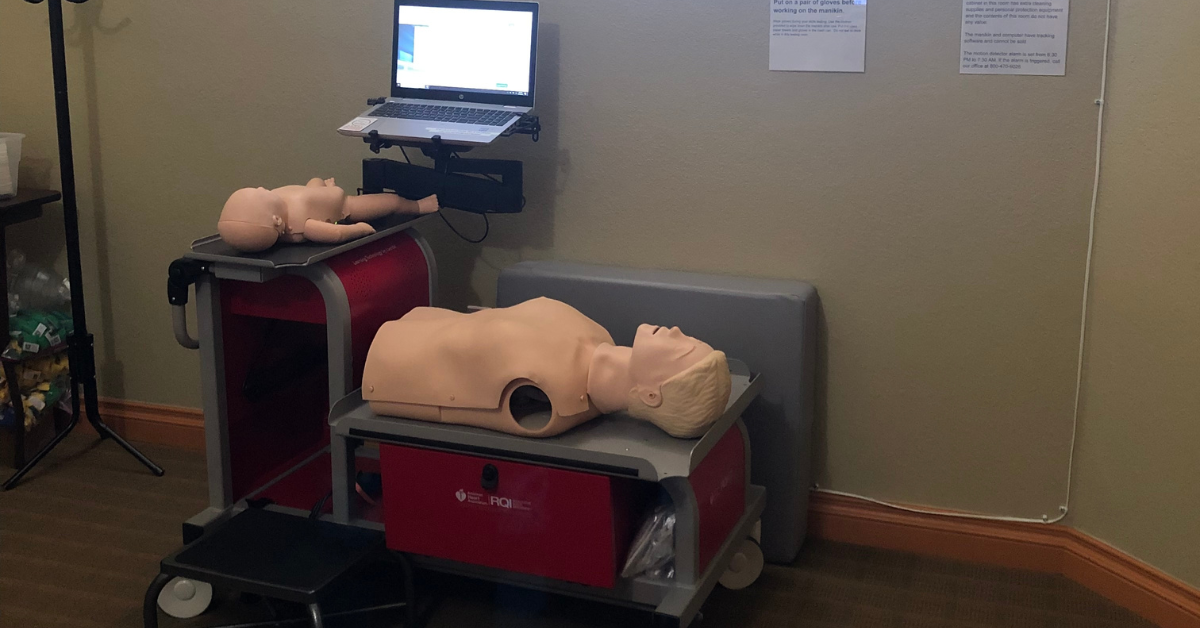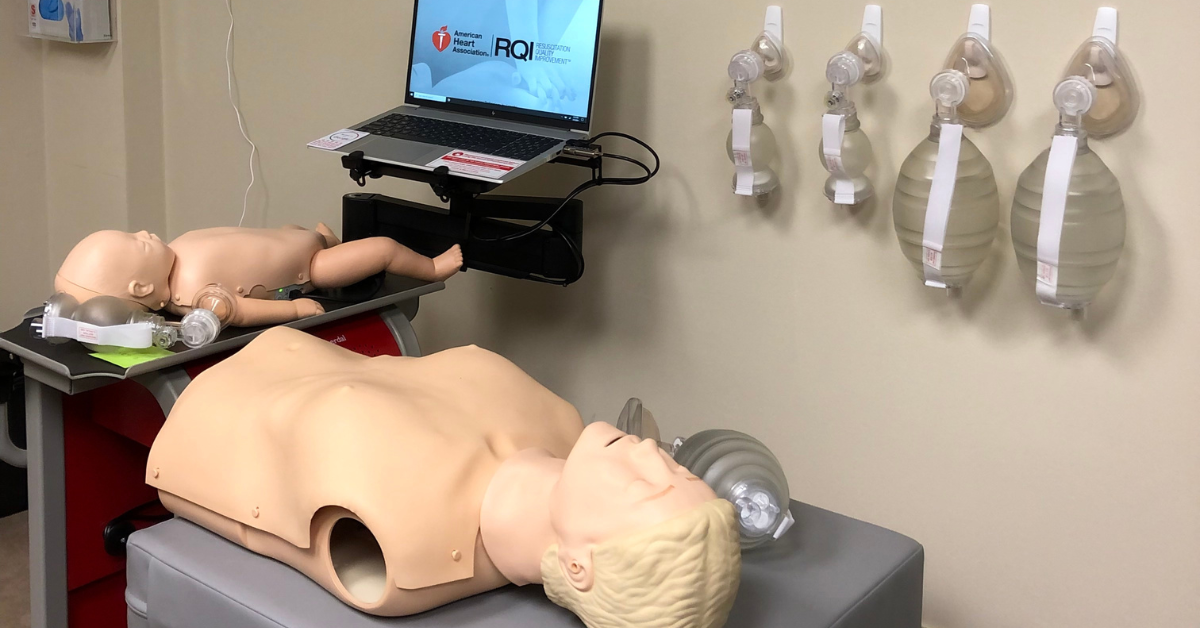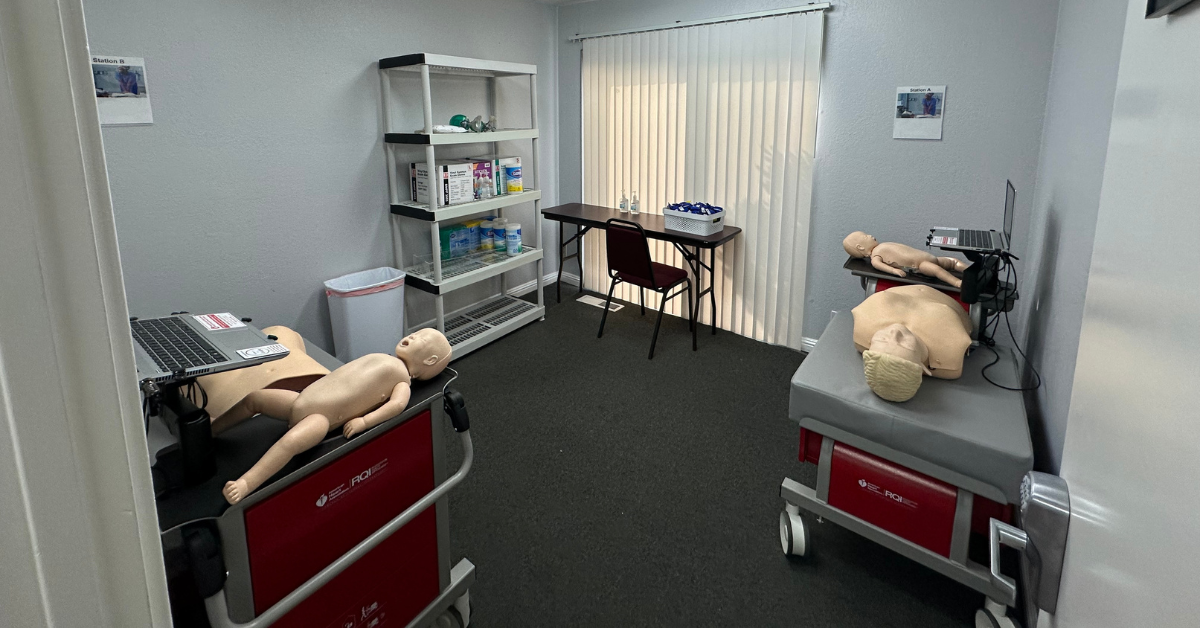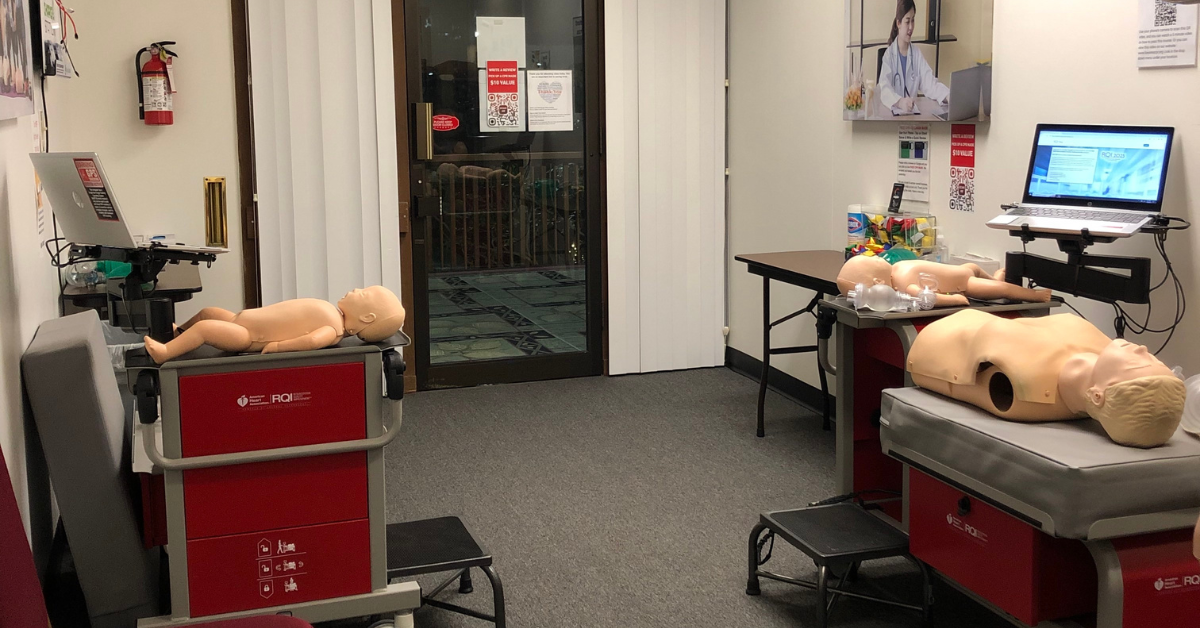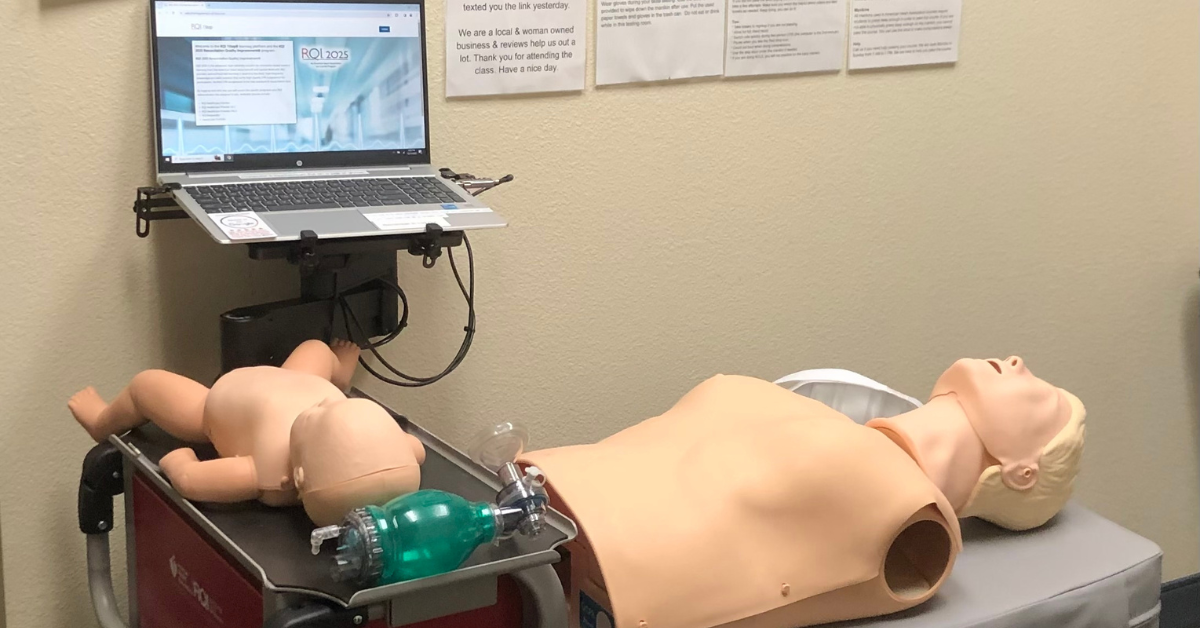BLS certification is more than just a credential—it’s a powerful tool that equips you to save lives. This guide explores the world of BLS courses in San Francisco, providing valuable insights for aspiring healthcare professionals, first responders, and anyone seeking to enhance their emergency preparedness. We’ll cover the core components of BLS training, the certification process, and how to choose the right course in San Francisco based on your schedule, learning style, and budget. Get ready to become a confident and capable first responder.
Key Takeaways
- BLS certification provides essential life-saving skills: From healthcare professionals to everyday individuals, BLS training empowers you to respond effectively in emergencies. It’s a valuable asset for career advancement and personal preparedness.
- Choose the right BLS course for your needs: Consider factors like your schedule, preferred learning style, and budget when selecting a course. Look for reputable providers offering various formats and convenient locations.
- Prepare for your course to maximize learning: Check for pre-course materials and familiarize yourself with the course requirements. This preparation will help you get the most out of your BLS training.
What is BLS & Why is it Important?
Basic Life Support (BLS) is a crucial certification, especially for healthcare providers and first responders like doctors, nurses, EMTs, and firefighters. It covers core life-saving techniques that build upon basic CPR to address cardiac arrest, respiratory distress, and airway obstructions. BLS training gives individuals the skills to respond effectively in emergencies, making it a vital part of healthcare and emergency response preparation. It emphasizes early recognition and high-quality CPR, including chest compressions, rescue breaths, and using an AED. Because it goes beyond the basics of CPR, BLS certification is often a job requirement for many healthcare professionals. For anyone working in healthcare, having current BLS certification demonstrates a commitment to patient safety and high-quality care.
Common BLS Misconceptions
One frequent misconception is the difference between BLS and CPR. While CPR focuses on essential life-saving skills like chest compressions and rescue breaths, primarily for cardiac arrest, BLS offers more advanced techniques and protocols tailored for healthcare workers and first responders. It delves deeper into teamwork, defibrillation, and advanced airway management. This distinction is important for understanding the different levels of training and their respective applications.
Another misunderstanding surrounds who needs BLS training. Some believe it’s exclusively for medical professionals, but it’s essential for anyone in a healthcare role or first response capacity, as these jobs often require this certification. This includes medical assistants, dental hygienists, and other allied health professionals. Even those outside of direct patient care, such as physical therapists or athletic trainers, can benefit from BLS training. Having this certification can also be beneficial for those working in fields like education, childcare, and fitness.
Finally, the structure of BLS courses is sometimes misrepresented. A typical BLS course takes a single day and covers comprehensive training in adult, child, and infant CPR, including chest compressions, ventilation techniques, and AED use. Some courses also offer online components or blended learning options for added flexibility. Understanding the time commitment and course structure helps individuals plan their training effectively.
Top BLS Course Providers in San Francisco
Finding the right BLS course provider is key to a positive and effective learning experience. Here’s a look at some of the top options in San Francisco:
Safety Training Seminars
Safety Training Seminars, a woman-owned business, offers AHA-certified BLS, ACLS, PALS, CPR, and First Aid courses in San Francisco. They prioritize high-quality instruction and convenient scheduling, with classes offered daily throughout the city and surrounding areas like Daly City, San Mateo, and Oakland. Check out their low price guarantee for competitive course pricing.
American Red Cross
The American Red Cross is a well-known provider of BLS certification and renewal courses in San Francisco. Their training covers essential life-saving skills, including CPR, AED usage, and airway management.
Revive CPR
Revive CPR offers AHA-certified CPR, BLS, and First Aid classes in San Francisco. They emphasize instructor-led, hands-on training instead of programs that rely on voice-assisted manikins, allowing for more personalized instruction.
Heart Start CPR
With 18 years of experience, Heart Start CPR provides AHA-certified BLS, ACLS, PALS, and fire training classes in San Francisco, primarily for healthcare providers. They train over 5,500 students annually, making them a prominent training center in the area.
Bay Area CPR
Bay Area CPR, powered by Safety Training Seminars, offers a range of AHA courses throughout Northern California. They provide daily BLS, ACLS, PALS, CPR, and First Aid certification courses in over 60 cities, increasing access to training for a broader audience.
BLS Course Formats & Durations
Finding the right BLS course format is key to successful learning. Whether you thrive in a classroom setting, prefer the flexibility of online learning, or need a blended approach, there’s a BLS course out there for you. Let’s explore the different formats available:
In-Person Classes
In-person BLS classes offer a structured learning environment with direct interaction with a certified instructor. These classes typically run for about four to five hours, according to the American Red Cross, and cover all the essential BLS skills and knowledge. This format is great for those who value hands-on training, real-time feedback, and the opportunity to ask questions and practice skills in a supportive setting. It’s also a good option if you learn best through direct interaction and observation.
Online Courses
If your schedule is packed or you prefer learning at your own pace, an online BLS course might be a better fit. The American Red Cross highlights the accessibility and ease of these courses, allowing you to study whenever and wherever it’s convenient. Keep in mind that most online BLS courses require an in-person skills session to obtain your final certification. This blended approach ensures you get the practical experience necessary to perform BLS effectively.
Hybrid Learning
Hybrid learning combines the convenience of online learning with the benefits of in-person instruction. You’ll typically complete the theoretical portion of the course online, then attend a shorter in-person skills session to practice and demonstrate your skills. This blended learning approach can be a faster and more efficient way to get certified. It’s a great option for those who want flexibility but also recognize the importance of hands-on training.
RQI Programs
For healthcare professionals, the Resuscitation Quality Improvement (RQI) program offers a specialized approach to BLS training. The American Heart Association RQI program is a popular, modern, and efficient way for medical professionals to get their BLS certification. RQI focuses on continuous learning and skill maintenance through low-dose, high-frequency training, ensuring healthcare providers maintain their proficiency in life-saving techniques.
BLS Course Costs & Discounts
Knowing the price range for BLS courses and available discounts can help you budget for your training. Let’s break down the costs associated with BLS certification in San Francisco.
Average Price Range
BLS course costs in San Francisco vary depending on the training provider, the course format (online, in-person, or blended learning), and what’s included. Generally, you can expect to find BLS courses ranging from around $70 to $100. For example, Safety Training Seminars offers a variety of AHA-certified courses like BLS, ACLS, and PALS, each with competitive pricing. It’s always a good idea to compare prices from different providers before committing to a course.
Factors Affecting Costs
Several factors contribute to the overall cost of a BLS course. A training center’s reputation, the instructor’s experience, the course format, and included materials (like textbooks or pocket masks) and exam fees all play a role. Safety Training Seminars, a woman-owned AHA Training Center, focuses on providing high-quality instruction, which can influence pricing. Consider what’s most important to you – convenience, a particular learning style, or specific course content – when evaluating the cost.
Available Discounts & Promotions
Many BLS course providers offer discounts, so keep an eye out! You might find promotions for group registrations, early bird sign-ups, or student discounts. Safety Training Seminars sometimes offers discounts on their courses and also has a student discount program. Checking a provider’s website or contacting them directly is the best way to find current offers.
Group Training
If you’re coordinating training for a group, such as for your workplace or a community organization, many providers offer group discounts. Safety Training Seminars offers on-site training, a convenient and cost-effective option for businesses and other organizations in the San Francisco area. They can tailor the training to your group’s specific needs and schedule.
BLS Certification Process
Getting your BLS certification is straightforward. This section breaks down the key steps, from course components to renewal.
Course Components
A typical BLS course, like those offered by Safety Training Seminars, is comprehensive, covering essential life-saving techniques. These courses are usually one-day programs, running from approximately 9 am to 4 pm. The curriculum, certified by the American Heart Association (AHA), covers CPR for adults, children, and infants. You’ll learn crucial skills like chest compressions, rescue breaths (ventilation), and how to use an AED. The course often includes instruction on choking relief.
Exams & Skills Assessments
BLS courses involve both written exams and practical skills assessments. You’ll participate in hands-on training, practicing techniques like two-person CPR. The skills assessment requires demonstrating proficiency in these techniques, ensuring you can perform them correctly in an emergency. The written exam tests your understanding of the course material, covering topics like CPR for different age groups and AED operation.
Certification Validity & Renewal
Your BLS certification, much like standard CPR certification, is typically valid for two years. To maintain your credentials and stay current with the latest guidelines, you’ll need to complete a recertification course before it expires. Renewal courses cover the same core material as the initial BLS course, reinforcing your skills and knowledge.
Same-Day Certification
Many providers, including Safety Training Seminars, offer same-day BLS certification. This means you can complete the course and receive your official American Heart Association certification card all in one day. This is especially convenient for those with busy schedules or who need certification quickly for job requirements. After successfully completing the course and assessments, you’ll receive your certification card, valid for two years.
Instructor Qualifications & Training Quality
When your health or the health of a loved one is on the line, you want assurance that the person providing care is highly qualified. Choosing a CPR class with a certified instructor through a reputable training center is essential. Here’s what to look for in a high-quality BLS course.
AHA Certification Requirements
The American Heart Association (AHA) sets rigorous standards for BLS instructors. All instructors must hold current BLS provider certification and complete a specialized BLS instructor course through an authorized training center. This two-part process ensures instructors have up-to-date knowledge and practical skills, and emphasizes effective teaching strategies so they can confidently guide their students. Look for training centers and instructors who meet or exceed these requirements.
Ongoing Instructor Education
Maintaining AHA Instructor certification is an ongoing process. Instructors participate in continuing education to stay current with the latest BLS guidelines and techniques. This commitment to ongoing learning ensures instructors provide students with the most relevant and effective training. Safety Training Seminars is a woman-owned AHA Training Center committed to providing high-quality instruction. We ensure our instructors receive the ongoing training and support they need to excel.
Training Center Standards
Look for courses offered through authorized AHA Training Centers. These centers adhere to specific requirements for course content, equipment, and instructor qualifications. For example, the AHA’s Resuscitation Quality Improvement (RQI) program offers a modern approach to maintaining BLS, ACLS, and PALS certifications for healthcare professionals. Choosing a training center that embraces programs like RQI demonstrates a commitment to high-quality, evidence-based training, giving students confidence they are receiving the best possible instruction.
What to Expect in a BLS Course
Getting ready to take a BLS course? Here’s a preview of what you’ll learn and how the training works. Understanding the curriculum and training methods will help you feel prepared and confident on the day of your course.
Core Topics
BLS courses cover the essential life-saving skills needed to respond to cardiac arrest and other emergencies. You’ll learn adult, child, and infant CPR, including chest compressions and giving rescue breaths. The course also covers how to use an AED, a device that can help restore a normal heart rhythm. Choking emergencies are addressed as well, preparing you to assist adults, children, and infants. You can find more details on the American Heart Association BLS course page.
Hands-On Practice
BLS isn’t just about learning the theory—it’s about developing the skills to act quickly and effectively in a crisis. Expect significant hands-on practice throughout the course. You’ll work with realistic training equipment, including CPR manikins and AED trainers, to simulate real-life scenarios. This practical experience builds your muscle memory and confidence so you’ll be ready to respond effectively in an emergency.
Training Equipment
High-quality training equipment is essential for an effective BLS course. You’ll have access to the tools you need to practice your skills, including adult, child, and infant manikins. AED trainers allow you to practice using an AED in a safe, controlled environment. Safety Training Seminars uses up-to-date equipment to ensure you receive the best possible training.
Choosing the Right BLS Course
Finding the right BLS course means considering a few key things to make sure it fits your needs and learning style. This section breaks down those factors to help you make a smart choice.
Your Schedule & Learning Style
Think about how you learn best and what kind of schedule works for you. Do you prefer a traditional classroom, or do you like the flexibility of online learning? Many providers offer a variety of course formats, from in-person group sessions to online courses with in-person skills practice. The Red Cross is one example that offers several options. Also, consider your availability. Look for courses offered on weekends, evenings, or weekdays to fit your schedule.
Course Content & Provider Reputation
Choosing a course with high-quality content from a reputable provider is essential. Look for courses that follow the latest American Heart Association guidelines. Safety Training Seminars, a woman-owned AHA Training Center in San Francisco, offers comprehensive BLS training that meets these standards. They also provide other AHA courses like ACLS, PALS, CPR, and First Aid. For healthcare professionals, the AHA’s RQI program offers a modern approach to BLS certification, focusing on hands-on practice and real-time feedback.
Location & Accessibility
Finally, think about the course location and how easy it is to get there. If you’re in the San Francisco Bay Area, Safety Training Seminars offers classes daily at multiple locations, with extended hours from 8 am to 10 pm, seven days a week. This makes it convenient whether you live in San Francisco, Daly City, San Mateo, or Oakland. They also offer on-site training. If you have a group of employees to train, they can conduct BLS, CPR, and First Aid courses at your workplace.
Benefits of BLS Certification in San Francisco
Career Advancement
A BLS certification can open doors in your career, particularly in healthcare. Many employers see it as a sign of your dedication to patient safety and handling emergencies. It can give you an edge over other candidates and may even be a requirement for promotions. For example, if you’re a certified nursing assistant (CNA) aiming to become a registered nurse (RN), a BLS certification demonstrates your commitment to patient care and strengthens your application. Medical assistants, EMTs, and paramedics also often prefer or require candidates with current BLS certifications. The American Red Cross acknowledges the value of BLS certification across many jobs, highlighting its importance for career growth.
Job Requirements
In San Francisco, and across the country, many healthcare positions require BLS certification. BLS skills are fundamental to patient care and emergency response in many healthcare settings. The American Red Cross distinguishes BLS (Basic Life Support) as a more advanced certification compared to standard CPR, designed for healthcare professionals and first responders. If you’re aiming for a career in these fields, BLS certification is often essential. Beyond hospitals and clinics, organizations like schools, daycare centers, and community centers frequently require staff to be BLS certified to handle medical emergencies effectively.
Emergency Preparedness
BLS certification empowers you with the skills to confidently handle emergencies. While crucial for healthcare providers, it’s also invaluable for anyone who wants to be prepared. A BLS course teaches life-saving techniques like CPR for adults, children, and infants, plus how to use an AED (Automated External Defibrillator). These skills can make a difference in various emergencies, from a heart attack at home to an accident in public. Knowing you can provide immediate assistance can bring peace of mind. The Red Cross emphasizes how important BLS training is for community safety. You can learn more about what’s covered in a BLS course from resources like the Charles Institute.
Prepare for Your BLS Course
Getting ready for your BLS course doesn’t have to be stressful. A little preparation goes a long way in ensuring you get the most out of your training. Here’s what you need to know:
Required Materials & Pre-Course Study
Before your BLS course begins, see if your training center provides any pre-course materials. Reviewing these will give you a head start and help you feel more confident going into the class. Check with your chosen provider to see what they offer. For those training in San Francisco, Safety Training Seminars offers resources to help students prepare.
What to Bring
While specific requirements might vary, having a computer or tablet is essential for accessing online course components. Using a phone isn’t recommended, as the smaller screen can make it difficult to engage with the material. For more details on what to expect, visit the Safety Training Seminars website.
Post-Certification Maintenance
Your American Heart Association BLS certification is valid for two years. Mark your calendar so you know when it’s time to recertify. Staying current with your BLS certification ensures you’re always prepared to provide high-quality care. The RQI program offers a convenient renewal option, especially for busy healthcare professionals.
For those seeking flexibility and accredited instruction, training centers outside the city can also be a great fit. Options like BLS CPR Classes in San Leandro and BLS CPR Classes in Woodland offer high-quality, AHA-certified courses that are ideal for healthcare professionals and first-time learners alike.
Frequently Asked Questions
What’s the difference between BLS and CPR?
CPR focuses on immediate life-saving techniques like chest compressions and rescue breaths for cardiac arrest. BLS builds upon CPR, adding advanced skills like using an AED, managing airways, and working effectively in a team. It’s designed for healthcare providers and first responders.
Who should get BLS certified?
While often a job requirement for healthcare professionals like doctors, nurses, and EMTs, BLS certification is beneficial for anyone working in healthcare or a first-response capacity. It’s also a valuable skill for those in education, childcare, or fitness. Even if not required for your job, BLS training empowers you to help in emergencies.
How long does it take to get BLS certified?
BLS courses typically take a single day to complete. Some providers offer blended learning options with online coursework and a shorter in-person skills session. This flexibility allows you to choose a format that fits your schedule.
How much does a BLS course cost?
BLS course costs vary but typically range from $70 to $100 in San Francisco. Factors like the training provider, course format (online, in-person, or blended), and included materials can influence the price. Look for discounts or promotions, which are often available for group registrations or early bird sign-ups.
How do I maintain my BLS certification?
BLS certification is valid for two years. To renew, you’ll need to take a recertification course before your current certification expires. This refresher course covers the same core material, ensuring your skills and knowledge are up-to-date. Some providers offer convenient renewal options like the RQI program, which is designed for busy healthcare professionals.


